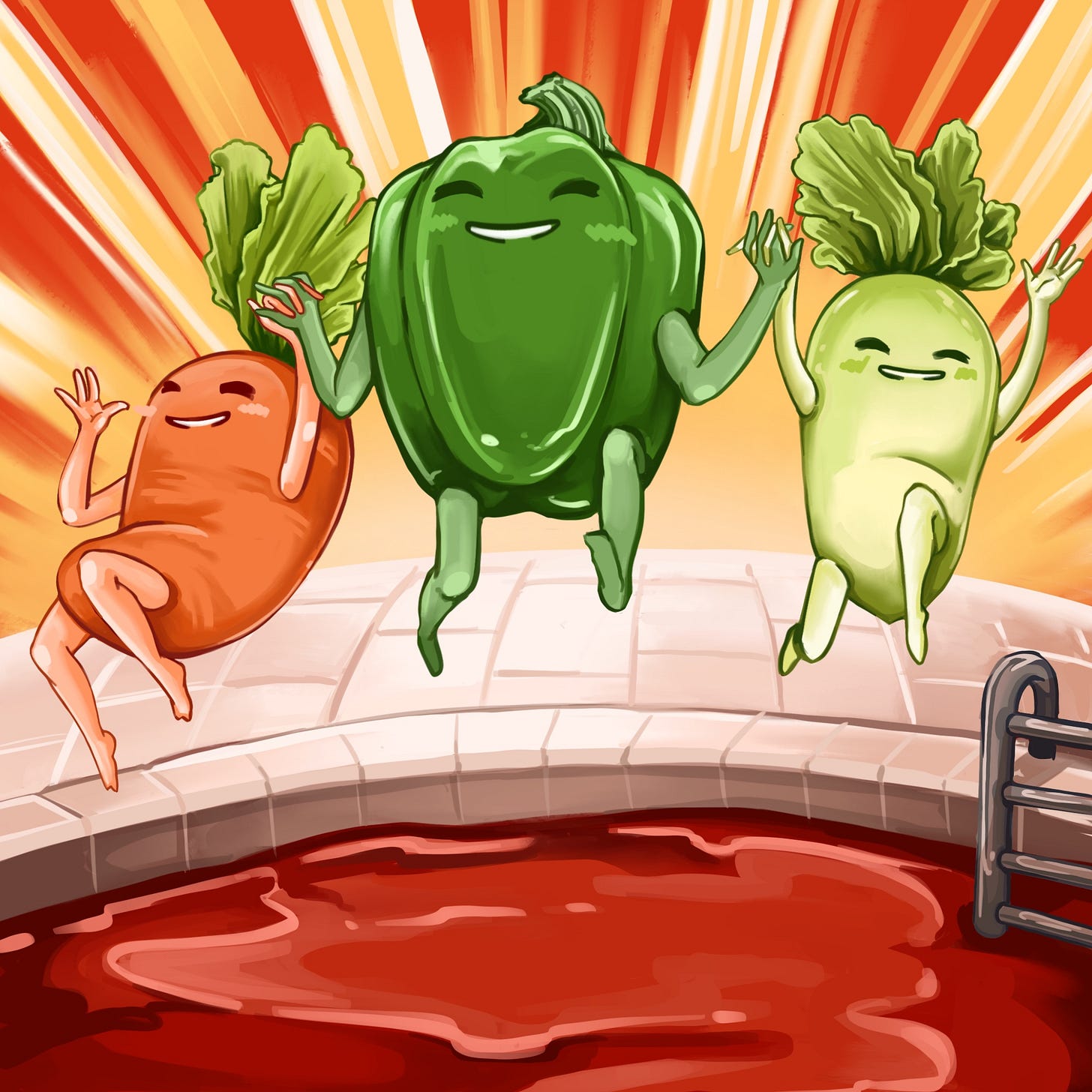Crossroads is a column about cooking and eating at the crossroads of multiple cultures. We explore dishes created from immigrants’ resourcefulness and creativity as they create the foods of their homeland while having to make do with the ingredients they have available to them in their new environment. This isn’t “fusion cuisine” (as in, the kind of stuff that would be served at a restaurant or marketed to the masses), but rather, food that’s part of a quirky, in-between cuisine reflective of where they’re from and where they currently live—something rooted simultaneously in tradition and innovation. You can check out TOD’s archive of past recipes here.
Hi! Before we jump in, I wanted to chime in and share that today’s dispatch of “That One Dish” is from the archives of Dill Magazine’s weekly newsletter and written by the incredibly talented Mike Sula, who’s a senior writer and restaurant critic at the Chicago Reader. This piece was originally published in 2021 (OG subscribers, you might recognize this one), with illustrations by the fabulous Mary Rednikova.
All Sun Hee Kim wanted was to persuade her three boys to eat their vegetables. All they wanted was salty, greasy pizza and burgers. Her oldest was an especially picky eater, turning his nose up at the array of vegetable side dishes she put on the table to accompany the soup, rice, and occasional grilled mackerel or bulgogi she served the family most dinners. It certainly wasn’t easy. She worked 11-13 hours a day pressing shirts and folding laundry at the dry cleaner where she found work after emigrating from Seoul in the early 80s and landing in Chicago.
“My mom was pretty stubborn,” says Won Kim, who joined his mother in the city’s far north side West Rogers Park neighborhood at the age of one. “She was pretty adamant about keeping true to Korean food and making sure we don’t lose sight of what she grew up with. We were asshole kids. We were trying to be Americanized and assimilate and eat hoagies and roast beef sandwiches.”
Still, Umma wanted to make them happy. “I used to get recipe suggestions from women at the church,” she says. “I remember I used to put a lot of ketchup on things, especially potatoes. If I got home early from work and had some energy left, I would try to make western food. Sometimes I would try to mix it in with our usual meal by adding things like ketchup-potatoes as banchan.”
Spaghetti with tomato sauce seemed like something she could work with. “I was told it had a lot of nutrition in it,” she says. The Kims happened to arrive in the United States during the golden age of commercial pasta sauce, when Prego battled Ragú on network television, and a family-sized bowl of spaghetti could be on the table in the time it takes to boil a pot of water.
“She basically did kitchen sink spaghetti sauce,” says Won Kim, now the chef at Chicago’s Kimski, renowned for an axiomatic mashup of Korean and Polish street food. “Any vegetable she would use for banchan, if there was any leftover she would basically chop it up, like brunoise it, and just kind of fold it in,” he says. Green bell peppers, mushrooms, daikon radish, could all make their way into the pot and then tossed in the jarred sauce. “All the carrots that my mom put into the sauce made it so much sweeter than the sugar that was already in the Ragú.”
“I didn’t want anything to go to waste,” says Sun Hee. “Aside from money being tight, we did not have a car until later, and it was difficult to carry many groceries.”
“In the mid 80s people didn’t give a shit about Korean food here,” says Won. “It was as foreign as it could be back then. People just thought it was gross. You know how Americans are—they treat every ethnic food as fucking gross until Jamie Oliver presents it. And then everyone’s on board.”
He remembers the mockery of his peers on the occasions he brought Korean food to school, and the shame and embarrassment that led him to deny it. At the same time he was learning to appreciate other cuisines. “We were living around Pakistani and Mexican families,” he says. “We would share food and we would adjust our taste to it. Putting kimchi on top of pizza was like hot sauce to us back then. And adding gochujang to everything; adding soy sauce to everything as a salt. Sesame oil tastes good on everything. It was almost a gateway to other people’s food by putting our food on top of it.”
Won Kim says he and brothers loved their mom’s spaghetti sauce but it was years before he realized what marinara or Italian-American Sunday gravy was. He thinks his first encounter with carrot-free sauce was in the mostaccioli at Brown’s Chicken & Pasta with the “weird powdered cheese.”
“When I found out what it was I almost broke down,” he says. “Like, oh my God, my mom was trying so hard to make us feel ‘American’ or ’normal’ compared to what she thought other kids our age were eating.”
These days Sun Hee is comfortably semi-retired in the suburbs, and she no longer doctors spaghetti sauce from a jar.
“She’s not working 80 hours a week anymore to feed some fat ungrateful Korean kids,” says Won, who uses his mom’s kimchi and bulgogi marinade recipes at Kimski. “She keeps everything 100% Korean now.”
Paid subscribers will be receiving Sun Hee’s recipe for her “Korean Ragu” this Friday. If you’ve been enjoying stories like this one on “That One Dish,” won’t you kindly consider upgrading your subscription? Running this newsletter, while incredibly rewarding, is a full-time job all on its own—and your support is what keeps this operation running smoothly. Thank you very much in advance!





